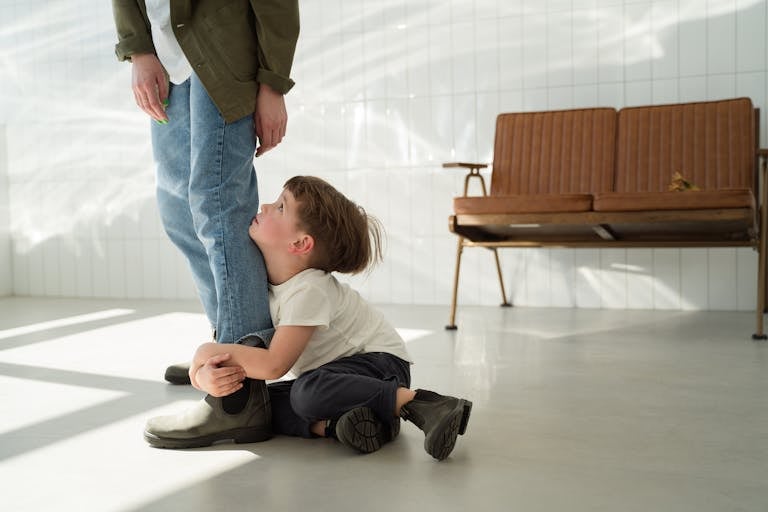Master Your Bedtime Routine: Say Hello to Calm Nights
You announce bedtime, and suddenly your sweet little angel transforms into a tiny, pajama-clad lawyer ready to argue their case for “just five more minutes.” You’re scrolling through your phone at 9:30 PM, wondering how bedtime became a two-hour negotiation session when it was supposed to start at 7:30.
Here’s the thing—you’re absolutely not alone in this nightly circus. That exhaustion weighing on your shoulders? That frustration bubbling up when your child pops out of their room for the fifth time with a sudden, urgent need for water? Every parent has been there, staring at their bedroom ceiling, wondering if they’ll ever experience a peaceful evening again.
But here’s some good news: peaceful nights aren’t mythical creatures that only exist in parenting magazines. They’re totally achievable with the right bedtime routine or nighttime routine, and we’re going to help you create one that actually works for your family.
This post will walk you through practical tips for mastering bedtime battles, including how to establish routines—structured activities that support sleep—creating a sleep-friendly environment that signals it’s time to wind down, and making the transition to dreamland smooth and (mostly) tear-free.
Why Is a Bedtime Routine So Important?
Think of a consistent bedtime routine as a secret signal to your child’s brain and body that it’s time to shift gears from “let’s climb the furniture” mode to “sweet dreams” mode. It’s like having a reliable GPS for sleep—your little one knows exactly where they’re headed and how they’ll get there. Routines are an important part of a child’s daily schedule, helping to create structure and support healthy habits.
The benefits go way beyond just getting your child to sleep faster (though that’s pretty amazing too):
Reduces Anxiety: Kids are tiny control enthusiasts who thrive on predictability. When they know exactly what’s coming next—bath, stories, snuggles, lights out—they feel secure and calm instead of anxious about the unknown.
Improves Sleep Quality: A solid routine helps regulate their internal clock, leading to better, more restorative sleep. Routines help promote healthy sleep by supporting good sleep hygiene, which includes healthy habits and an environment that encourages restful sleep. Better sleep means a happier child (and a more patient parent) the next day.
Strengthens Your Bond: Here’s the beautiful part—bedtime can transform from a daily battleground into precious one-on-one connection time. Those quiet moments together become some of the sweetest parts of your day.
Establishing good sleep hygiene is essential for healthy sleep and overall well-being.
Step 1: Crafting the Perfect Sleep Hygiene and Wind-Down Environment
Setting the stage for sleep doesn’t require a Broadway production budget—just a few simple tweaks that signal to everyone’s brain that it’s time to slow down. Creating a sleep-friendly environment, also known as a sleep environment, is key to promoting better sleep quality.
Dim the Lights: About an hour before bed, start lowering the lights throughout your house. This tells your child’s brain to start producing melatonin, that wonderful sleepy-time hormone. Think cozy coffee shop vibes, not interrogation room brightness. Consider using blackout curtains to block out external light and improve sleep quality.
Turn Down the Noise: Swap the blaring TV or energetic dance party music for quieter activities. You don’t need complete silence (that’s unrealistic with kids anyway), but aim for a calmer sound landscape.
Cool It Down: A slightly cool room is ideal for sleeping. Think cozy cave, not tropical paradise. If your child kicks off their blankets anyway, a comfortable room temperature around 68-70°F usually does the trick. Make sure your child has a comfortable pillow to support restful sleep.
Tech Be Gone: This is the big one, parents! No screens—TVs, tablets, phones—at least an hour before bed. That blue light is basically the enemy of sleep, tricking the brain into thinking it’s still daytime. Consider this one of the most crucial positive parenting tips in our digital age.
Step 2: Building Your Bedtime Routine (The Fun Part!)
Your routine should be consistent enough that your child knows what to expect, but flexible enough that it doesn’t feel like military boot camp. Aim for about 30-45 minutes total—long enough to properly wind down, but short enough that you don’t lose your mind. Doing the routine activities in the same order each night helps children feel settled and signals to their bodies that it’s time to relax and prepare for sleep.
Here’s your “menu” of activities to pick and choose from:
Bath Time: A warm bath is a classic for good reason. It’s naturally calming and creates a clear transition from day to night. Plus, there’s something magical about getting all clean and cozy before bed. A warm shower can also be a great option, especially for older children or adults, to help reduce stress and prepare for sleep.
PJs & Teeth: The non-negotiables, but you can make them fun! Let your child pick out their favorite pajamas or choose a fun-flavored toothpaste. Small choices give them some control while keeping you on track.
Quiet Play: Think puzzles, coloring, or building with blocks. Nothing that gets their heart racing or involves competitive sibling rivalry. Save the dance parties for earlier in the day.
Story Time: Reading together is fantastic for connecting and calming down. Let them choose the story (within reason—maybe not the one about the hyperactive monkey for the third night in a row), and use different voices to make it engaging. Reading together helps children relax, can induce sleep, and is a wonderful way to wind down at the end of a long day.
Gentle Stretching or Yoga: Try a few minutes of gentle stretching or simple yoga poses. This helps relax the body and mind, eases tension, and supports positive sleep behaviors.
Journaling or Keeping a Journal: For older children or adults, journaling can be a calming activity before bed. Writing in a journal helps process feelings and emotions from the day, reduces mental clutter, and can make it easier to relax and fall asleep.
Snuggles & Songs: A few minutes of cuddling, a gentle lullaby, or just talking about the day creates that precious bonding time. Ask them what made them happy today or what they’re excited about tomorrow. This is also a good time to talk about any worries or feelings from the day, helping children process emotions and relax before sleep.
Bedtime routines can look different for toddlers, preschoolers, and school-age children. For example, a toddler’s routine might include a bath, pajamas, a short story, and a lullaby. Preschoolers may enjoy picking out their pajamas, reading a book, and talking about their day. School-age children might add journaling, gentle stretching, or reading quietly on their own. The key is to keep the routine consistent and calming for each age group.
Tips for Better Bedtime Routines:
- Avoid vigorous exercise close to bedtime, as it can cause difficulty falling asleep.
- Keep bedtime and wake times consistent, even on weekends, to help ensure enough sleep and support healthy sleep behaviors.
- Aim for the recommended hours of sleep for your child’s age, and remember that adults also need enough sleep for optimal health.
- Bedtime routines are important for the whole family, including adults, and can improve quality of life and support healthy habits into adulthood.
- Routines help manage stress after a long day and support positive behaviors for both children and adults.
The final step of the routine should be getting into bed—once your head hits the pillow, it’s time for sleep. This clear signal helps everyone, from toddlers to adults, transition from the day’s activities to restful sleep.
Step 3: Handling the “But I’m Not Tired!” Stall Tactics
Ah, the classic bedtime negotiations. The sudden desperate thirst, the monster under the bed, the mysteriously forgotten homework that absolutely must be done right now. Your child’s creativity at bedtime would be impressive if it weren’t so exhausting. Consistent responses to these tactics help shape positive bedtime behavior, making it easier for your child to develop healthy sleep habits.
Here are some gentle but firm strategies for handling these moments:
The “One Last Time” Rule: “Okay, one last sip of water, and then it’s time for bed.” Be firm and consistent. If you cave every night, you’re basically teaching them that bedtime rules are more like bedtime suggestions.
The “Boring” Return: If they get out of bed, calmly and quietly lead them back. No big discussions, no extra snuggles, no negotiating. This approach reinforces positive sleep behaviors by showing that leaving bed does not result in extra attention. The goal is to make getting out of bed less exciting than staying in it. Think friendly robot mode—kind but efficient.
Listen & Reassure: For genuine fears, offer comfort and reassurance. A quick “monster check” under the bed and a nightlight can work wonders. Sometimes they really do need that extra bit of security to feel safe.
Why a Bedtime Routine Matters
Beyond just getting your child to sleep (which, let’s be honest, is reason enough), a structured bedtime routine helps children feel secure and know what to expect. This predictability reduces anxiety and resistance because they’re not constantly wondering what’s happening next.
Quality sleep is essential for their growth, mood regulation, and overall health. Well-rested kids are happier kids, and happier kids make for more patient parents. It’s a beautiful cycle when it works!
Plus, it gives you both a chance to connect and wind down together after what was probably a busy, chaotic day. Those quiet moments become precious memories for both of you. Establishing a consistent bedtime routine can greatly improve family life and contribute to overall happiness.
Sweet Dreams Are Made of This
Creating a peaceful bedtime routine isn’t about perfection—it’s about consistency and connection. A calming environment plus a loving, predictable routine equals the end of those nightly power struggles that leave everyone frazzled.
Remember, this won’t happen overnight (pun intended). Consistency is your secret weapon here. Some nights will go smoothly, others might involve a few extra trips back to bed or an impromptu monster hunt. That’s completely normal.
Be patient with yourself and your little one as you establish these new patterns. Every child is different, so feel free to adjust the routine to fit your family’s unique needs and personality.
You’ve got this, parents! Say goodbye to those epic bedtime battles and hello to peaceful evenings where everyone gets the rest they need. Sweet dreams for your kids mean a well-deserved break for you. Here’s to reclaiming your nights, one successful bedtime routine at a time!







